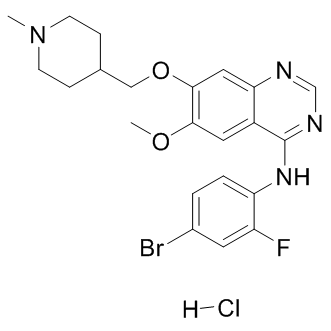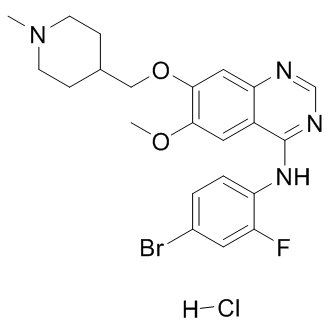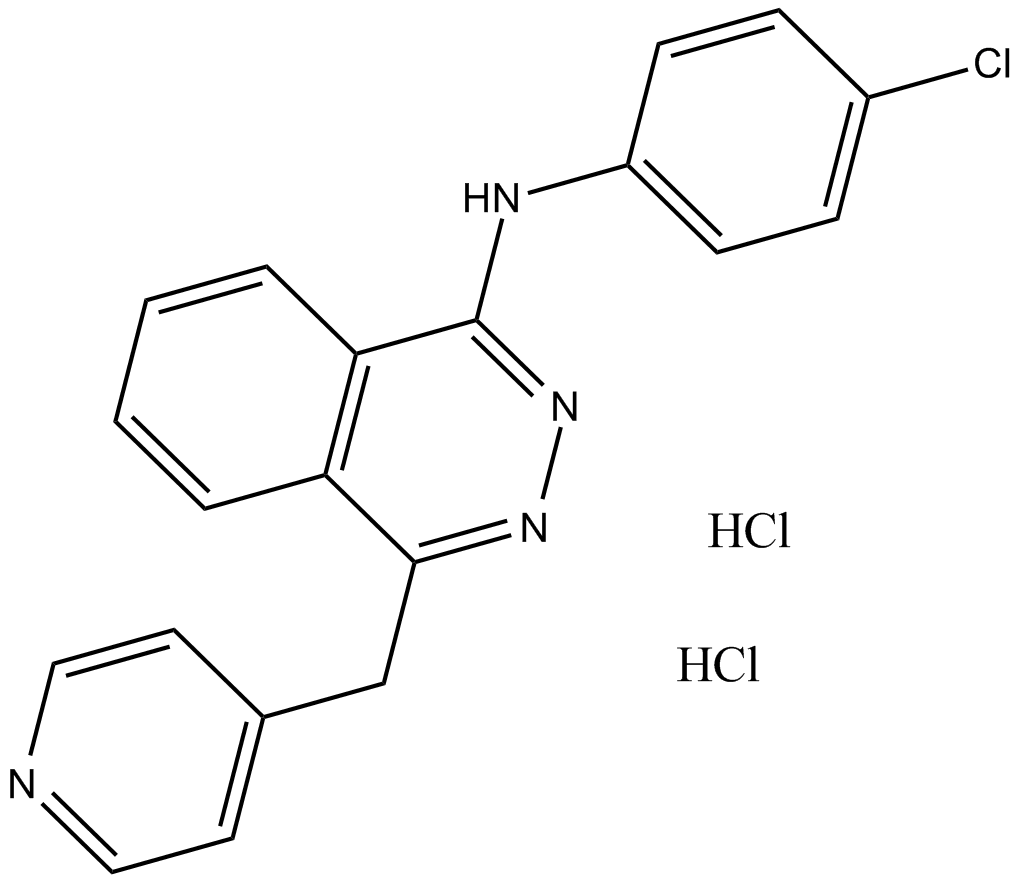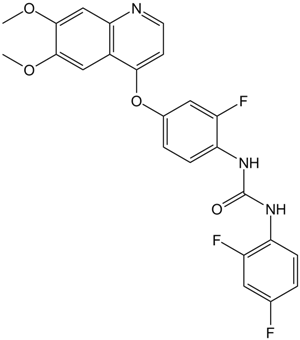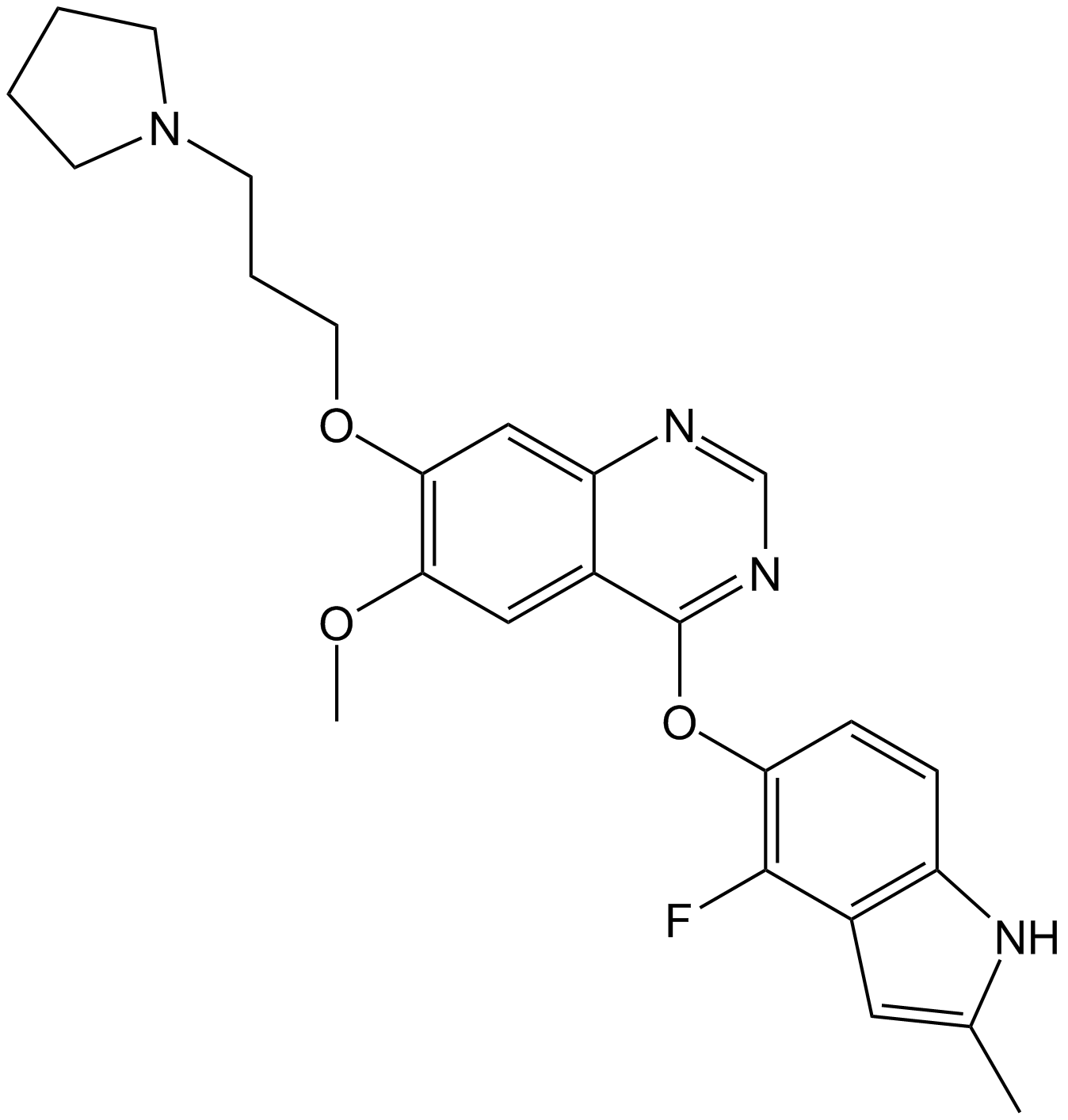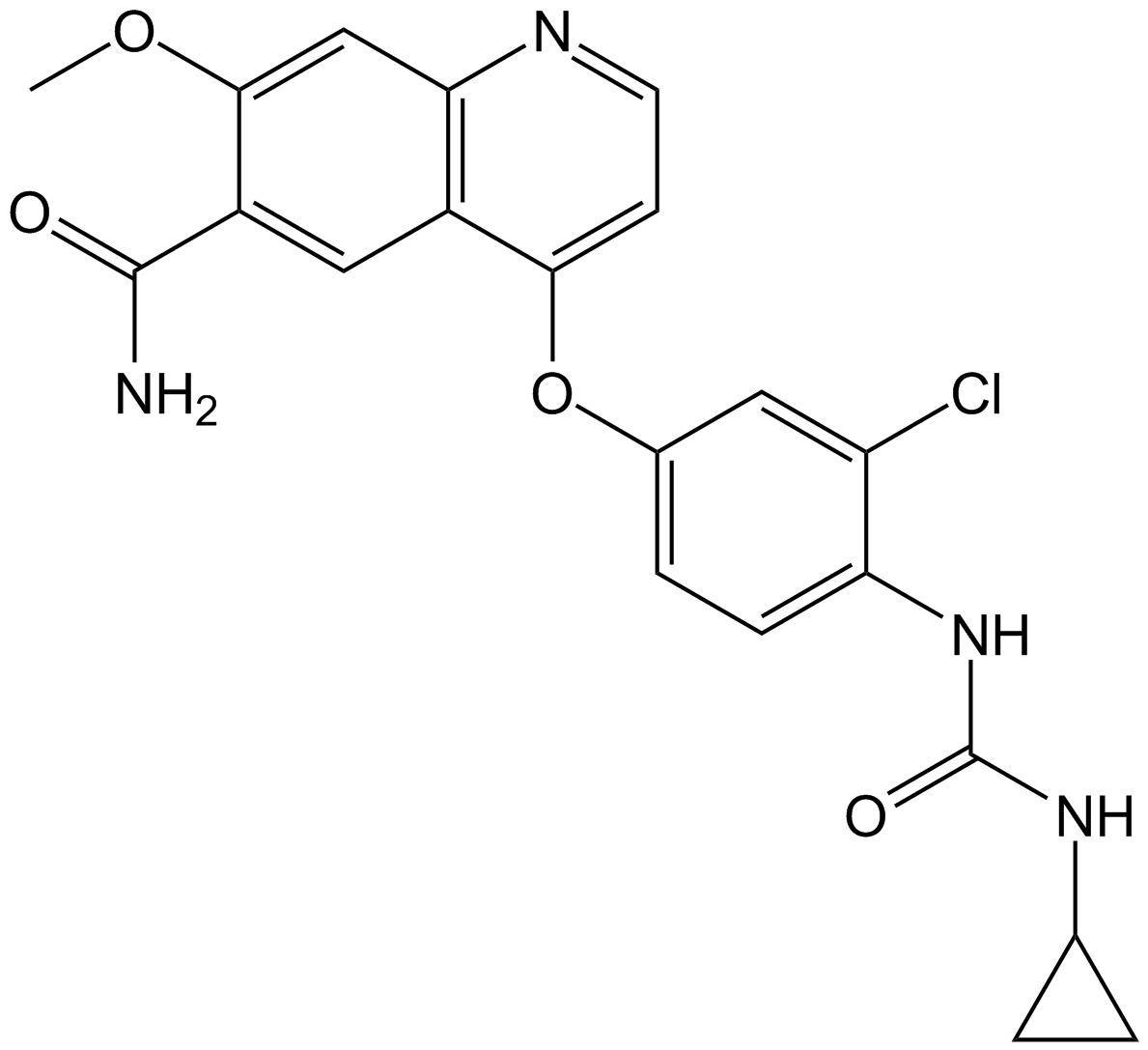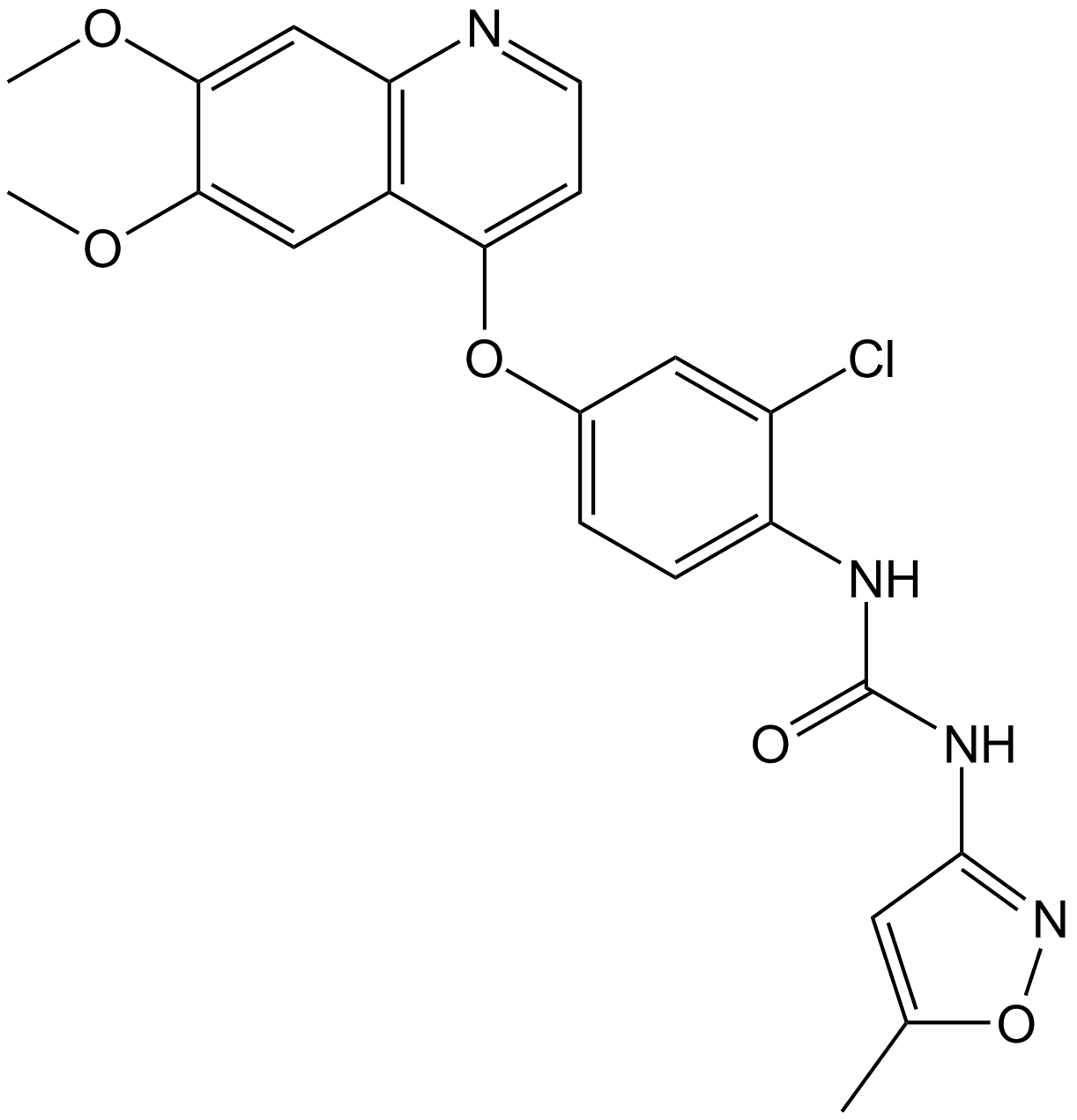Vandetanib hydrochloride
Vandetanib hydrochloride (CAS 524722-52-9) is a synthetic small-molecule kinase inhibitor targeting multiple receptor tyrosine kinases, including vascular endothelial growth factor receptor 2 (VEGFR2, IC50 = 40 nM), epidermal growth factor receptor (EGFR, IC50 = 500 nM), VEGFR3 (IC50 = 110 nM), and RET. Additionally, vandetanib selectively suppresses growth factor-induced proliferation of endothelial cells while sparing basal cell growth. Preclinical studies demonstrate inhibition of tumor angiogenesis, reduced tumor vascular density, enhanced apoptosis, and suppression of metastasis in tumor xenograft models. Vandetanib serves as a valuable research tool for oncology studies focusing on receptor tyrosine kinase signaling pathways.
| Physical Appearance | A solid |
| Storage | Store at -20°C |
| M.Wt | 511.81 |
| Cas No. | 524722-52-9 |
| Formula | C22H25BrClFN4O2 |
| Synonyms | Zactima hydrochloride; ZD6474 hydrochloride;ZD-6474 hydrochloride; ZD 6474 hydrochloride |
| Solubility | ≥51.2 mg/mL in DMSO with gentle warming; insoluble in H2O; insoluble in EtOH |
| Chemical Name | N-(4-bromo-2-fluorophenyl)-6-methoxy-7-((1-methylpiperidin-4-yl)methoxy)quinazolin-4-amine hydrochloride |
| SDF | Download SDF |
| Canonical SMILES | CN1CCC(COC2=C(OC)C=C(C(NC3=C(F)C=C(Br)C=C3)=NC=N4)C4=C2)CC1.Cl |
| Shipping Condition | Small Molecules with Blue Ice, Modified Nucleotides with Dry Ice. |
| General tips | We do not recommend long-term storage for the solution, please use it up soon. |
Quality Control & MSDS
- View current batch:
Chemical structure
